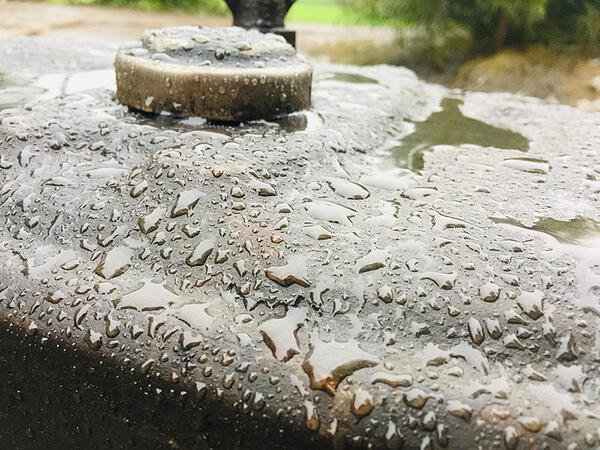If water has entered your diesel tank, don’t worry, we will tell you how to get rid of it. Water can accumulate in diesel for natural or man-made reasons. We have compiled this article to specifically address this situation. In addition to telling you how to solve this problem, we will also give you some tips on how to prevent water from entering your diesel tank again.
What to do if there is water in your diesel tank
Water exposure is a problem for any liquid fuel, not just diesel. By its very nature, diesel oil already contains water but, if for some reason, it is exposed to more water, this can cause problems for your boiler. In the long term, the exposure to water can damage the boiler’s mechanism as it creates sludge, oxidation and removes the lubrication, resulting in excess friction.
How do I know if there is already water in my diesel tank?
Before knowing what to do if there is water in your diesel tank, you should first learn what the signs are. There is water in your diesel tank when, for instance, the boiler tries to start but fails, or when you look at a transparent pipe and you notice that the liquid is brown. In addition, if you check the diesel filter and you find mud or other debris. Sometimes these signs are noticeable after the reservoir is refilled because the water at the bottom of the tank is swirling around.

Raise the pipe so that it doesn’t reach the bottom
A very common solution in these cases is to raise the pipe a little to prevent it from taking the diesel from the bottom of the tank. However, we would like to emphasize that this only addresses the symptoms and assumes that the water will remain at the bottom of the tank, with all the inconveniences that this may bring in the future.
Remove the water by “bleeding”
One of the properties of diesel is that it is less dense than water. Because of this, water tends to accumulate towards the bottom of the tank. This makes it easy to remove by opening a drain valve until all the water comes out (this is known as “bleeding” and it is done in the same way as in cars and motorcycles).
Decant the water using chemical additives
Something that helps quite a lot is anti-emulsifying, bactericidal, and anti-algae additives for diesel which, in addition to removing and separating the water, also demulsify it and prevent sludge from forming. Once decanted, the water can be removed anyway.
Empty the tank and clean it
This is probably the most drastic and effective solution. You don’t need to throw out the diesel. Whoever does this job for you can transfer it somewhere else, filter it, and then decant the water using chemical additives and remove the water. They can then place the diesel back into the clean tank.

The different ways that water enters the diesel tank and how to prevent them
Rain or snow in the reservoir
One of the most common ways for water to get into diesel is rain. If your diesel tank is outside and exposed to weather events such as rain or snow, water can, at some point, reach the fuel.
The main way to prevent this is to place the tank inside. The regulations for diesel tanks, in fact, require that tanks are protected from the rain, sun, and other weather elements.

Natural condensation inside the tank due to non-use
Another way that water can get into the diesel is when the tank is not being used and is not completely full, meaning when there is a space in the upper part of the tank and there is enough air to produce condensation, which can enter the form of dew.
This happens more often if the tank is made from sheet metal, and it is even worse if the water accumulation at the bottom (since, as we mentioned, water is denser than diesel) increases and results in the formation of mud, bacteria, and algae, which can cover the ducts.
As long as the tank and boiler will not be used for a relatively long time and the tank remains completely full of fuel, the solution here is to avoid empty space in the upper tank where water can condense and then drip onto the diesel fuel.
The lid is not closed properly of the tank has holes
Another point to remember is to always keep the tank perfectly covered and open it as little as possible to prevent air from entering, which increases the chance of condensation and precipitation. In the same vein, it’s important that your tank doesn’t have holes due to oxidation or something else as air is continuously entering it. Some form of ventilation must, however, be incorporated into the tank.
Poor quality diesel
Sometimes it happens that the problem is not because of water that has entered the diesel due to carelessness or another reason. It may, in fact, be due to poor quality diesel, which already has water in it. This is not very common, but it does happen.
By this, we do not necessarily mean that a malicious supplier has intentionally added water to the fuel to contaminate it and make a profit. We mean that the supplier themselves may have large diesel oil tanks and that water may, as we have already seen, condensed into one of them without realizing it due to excess air, rain, dew, etc.
The best way to avoid this is by making sure that you have a diesel supplier that takes precautions so that such things do not happen.

